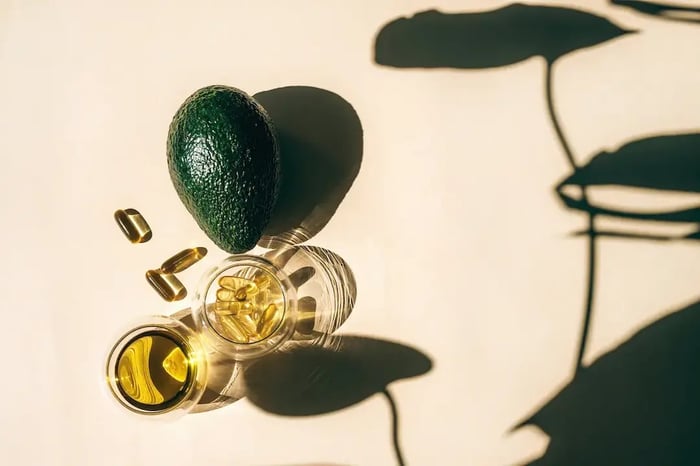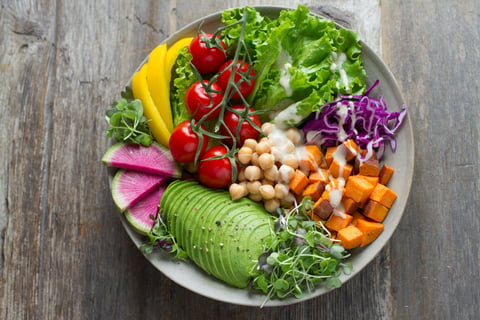 Photo: Marowl
Photo: Marowl
One of the biggest questions new or transitioning vegans might have when cutting out all animal-derived products from their lives is getting the right nutrition to maintain their well-being.
While protein is a big part of the equation and addressed by plenty of rising plant-based companies, other micronutrients matter just as much. One you need to take note of are Omega 3 fatty acids, a class of essential nutrients that cannot be produced or synthesized by the human body.
According to the Harvard School of Public Health: “They are an integral part of cell membranes throughout the body and affect the function of the cell receptors in these membranes. They provide the starting point for making hormones that regulate blood clotting, contraction and relaxation of artery walls, and inflammation.”
All this means that it’s vital to incorporate these nutrients into our diets, especially since Omega 3 deficiency can rear its head. According to the Icahn School of Medicine at Mount Sinai, symptoms include, “fatigue, poor memory, dry skin, heart problems, mood swings or depression, and poor circulation.”
Yet not all fatty acids are the same—in fact, there are three types of Omega 3 fatty acids. Here, we break them down and spotlight vegan sources of these essential nutrients.
 Photo: Manuta
Photo: Manuta
Alpha-Linolenic Acid (ALA)
The most common type of Omega 3 Fatty Acids is ALA, which is vital for human growth, development and energy production. Thankfully, it is abundantly found in plant sources, especially in seeds and nuts. Those on plant-based diets can include the likes of flaxseeds, chia seeds, avocados and walnuts as part of an overall varied diet.
Eicosapentaenoic acid (EPA) and docosahexaenoic acid (DHA)
EPA and DHA are both fatty acids that help to keep blood pressure at healthy levels and are needed for eye and brain health. Unlike ALA, EPA and DHA are harder to come by in plant sources. That however doesn’t mean it’s impossible as the fatty acid is present in seaweed and algae. The former can be easily added to your diet – think of nori flakes as a salad or simply having it as a snack.
How much Omega 3 fatty acids do you need per day?
According to Healthline.com: “To date, there is no official recommended daily allowance for EPA and DHA. However, most health organizations agree that 250–500 mg of combined EPA and DHA is enough for adults to maintain their overall health.”  Photo: tatiana_bralnina
Photo: tatiana_bralnina
Vegan sources of Omega 3 essential fatty acids
Chia seeds
Chia seeds have been consumed by human civilisation as far back as 3,500bc and for good reason: it is the richest plant source of Omega 3 fatty acids, in particular, ALA. In fact, 60 percent of the oil in chia seeds is from these omega-3 fatty acids. One serving, or two tablespoons (28 grams), delivers 5,000 mg, which exceeds the recommended daily intake of omega-3 fatty acids.
Seaweed
The Japanese have been the most prolific consumers of seaweed and it turns out, it’s more than just about adding umami flavor. In fact, wakame, a type of seaweed, is the highest plant source of EPA and DHA Omega 3 fatty acids. One ounce, or 28 grams, contains 4 to 134 mg of this vital nutrient.  Photo: lblinova
Photo: lblinova
Flaxseeds
Like chia seeds, flaxseeds are also an invaluable source of ALA, and one tablespoon contains 1.8 grams of Omega 3 fatty acid. Nutrition experts however, advise to consume flaxseeds in the ground form, as they can pass through the human body undigested. In fact, ground flaxseeds are easier to incorporate into your daily diet as they can then be added into everything from your smoothie to your post-workout shake.
Algal Oil
Some marine life are rich with omega 3 fatty acids for a reason: they feed on algae, which in itself are sources of EPA and DHA. Of course, it’s a bit strange for a human to feed on algae but fret not as health food companies have distilled all its goodness into pill form. Head to your nearest pharmacy or drug store and look for Algal Oil.






